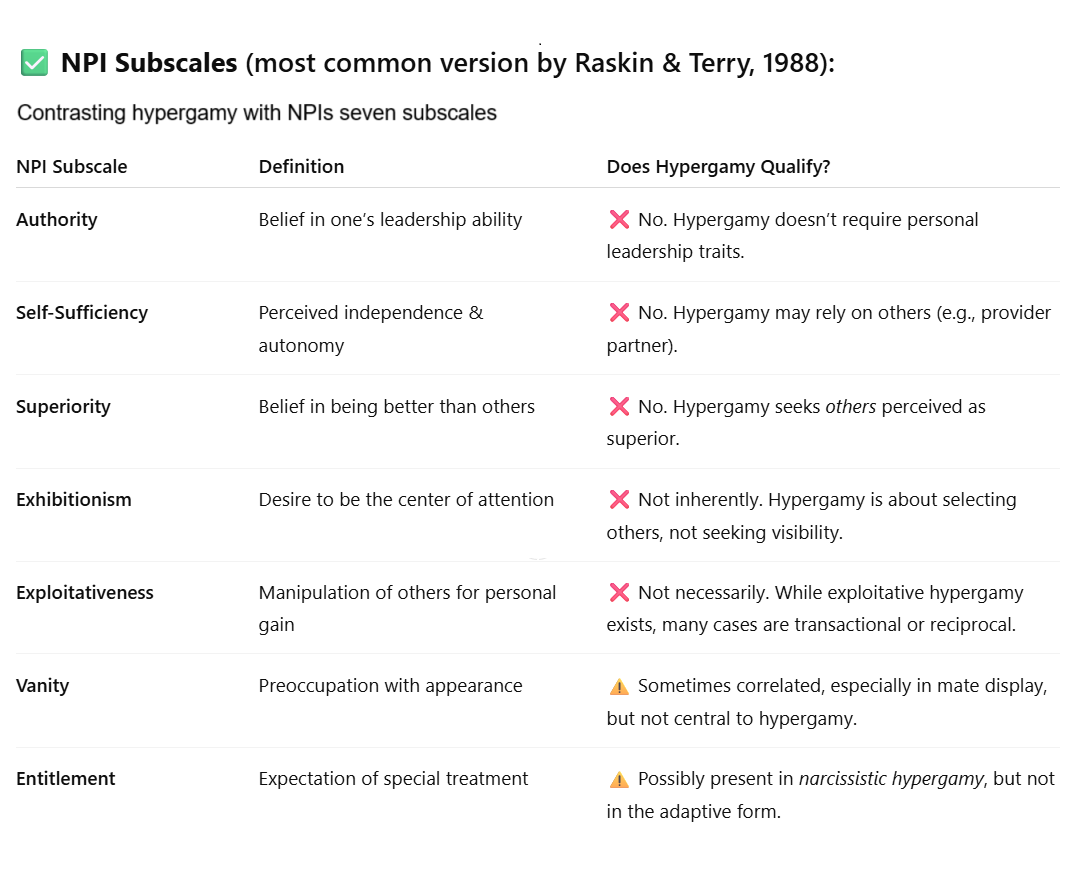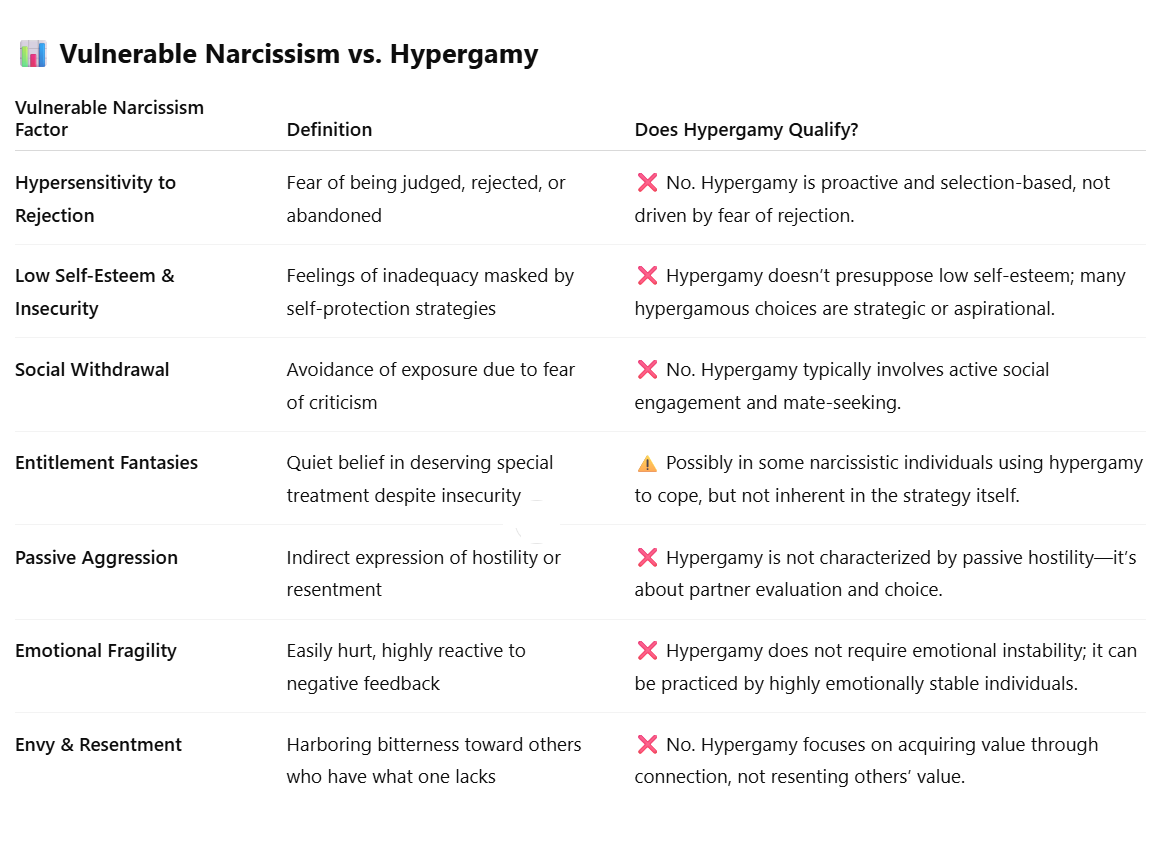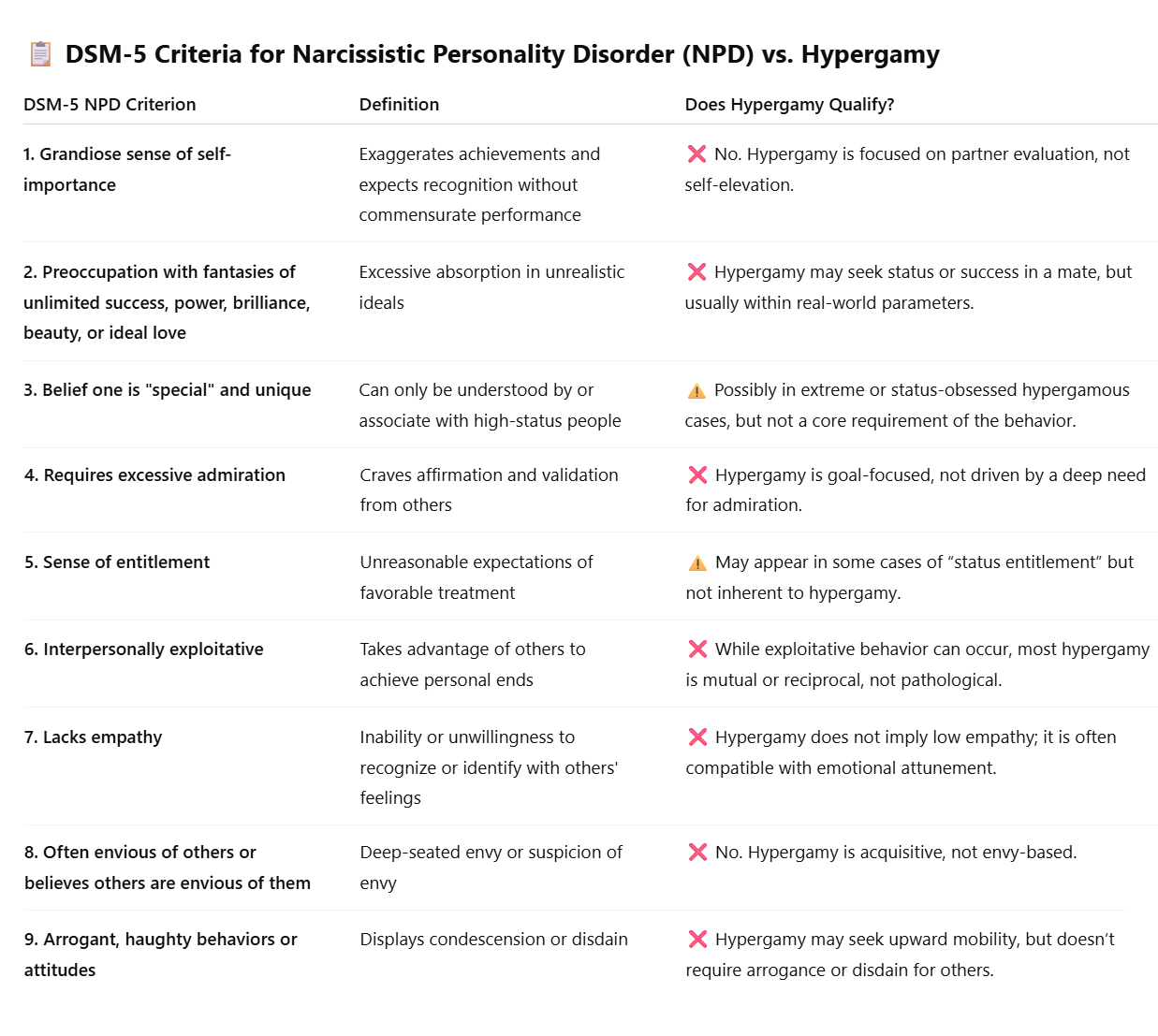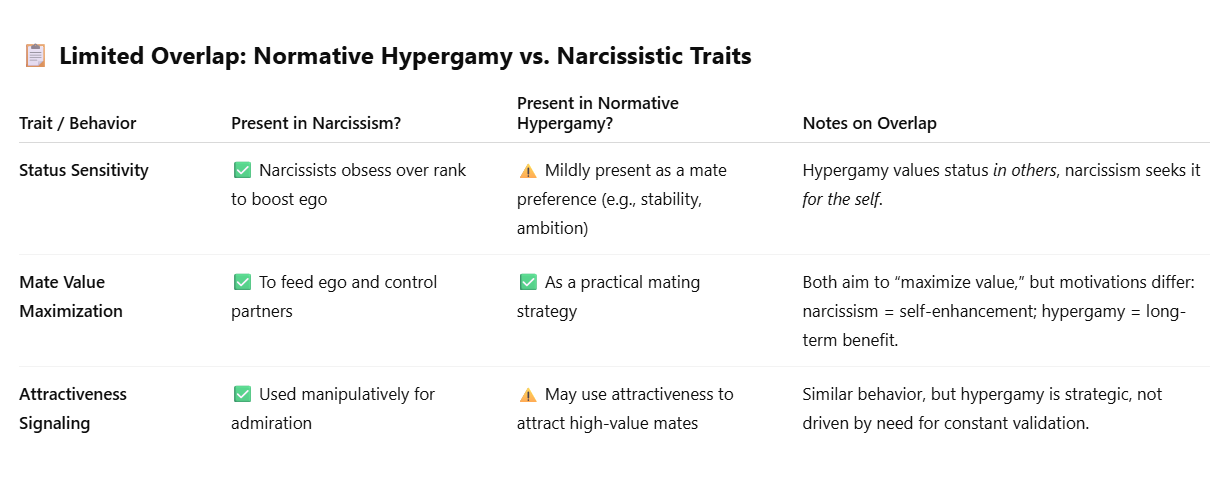What is Adaptive Hypergamy?
Hypergamy refers to the tendency—especially among women in evolutionary psychology literature—to seek mates of higher socioeconomic, educational, or social status. It’s adaptive in that it enhances the likelihood of long-term security or high-quality offspring.
It’s not inherently pathological, and many forms of hypergamy are based on mutual benefit, cultural norms, or rational life planning.
What is Narcissism?
Narcissism, as defined by the NPI, involves a personality style characterized by:
-
Grandiosity
-
Entitlement
-
Exploitativeness
-
Lack of empathy
-
Need for admiration
-
Superficial charm
These traits go beyond adaptive behavior and reflect deeper psychological dysfunction when pronounced.
Narcissistic Personality Inventory Subscales vs. Hypergamy:
Key Distinction: Motive & Pattern
-
Hypergamy: Selective mating strategy—adaptive, often rational, and shaped by social conditions.
-
Narcissism: Enduring personality pattern rooted in self-image regulation, often maladaptive.
Why Hypergamy Misses the Narcissism Mark:
-
Hypergamy is context-driven, not self-image driven.
-
It’s goal-directed behavior, not an enduring personality trait.
-
Not all hypergamous individuals score high on narcissistic traits—many may be high in agreeableness or conscientiousness.
-
NPI traits are egocentric and self-referential; hypergamy is other-referential (focused on the perceived value of the partner, not the self).
Conclusion:
Hypergamy does not qualify as narcissism under the NPI framework. While the two may superficially appear similar (e.g., seeking high-status partners might look like entitlement or superiority), hypergamy lacks the internal cognitive and emotional features of narcissism—such as chronic grandiosity, need for validation, or interpersonal exploitation.
To claim hypergamy is narcissism is a category error—confusing a social strategy with a clinical personality trait.
Vulnerable Narcissism Factors vs. Hypergamy
Summary:
-
Vulnerable narcissism is an internalized, fragile self-construct that leads to social anxiety, hypersensitivity, and hidden entitlement.
-
Hypergamy, in contrast, is an external social behavior that involves evaluating mates based on status, resources, or traits.
While some vulnerable narcissists may express hypergamy as a compensatory behavior (e.g., dating up to mask insecurity), the two are not equivalent and hypergamy does not meet the diagnostic profile of vulnerable narcissism.
DSM-5 Criteria for Narcissistic Personality Disorder (NPD) vs. Hypergamy
Summary:
To receive a DSM-5 diagnosis of NPD, an individual must meet at least 5 of the 9 criteria, and the traits must be pervasive, inflexible, and cause clinically significant impairment in social or occupational functioning.
Hypergamy:
-
Is contextual, adaptive, and goal-directed, not pathological.
-
Does not inherently involve distorted self-perception, interpersonal manipulation, or emotional dysfunction.
-
May co-occur with narcissistic traits in some individuals, but is not itself a symptom or diagnosis.
Comment:
Most overlaps occur when hypergamy is expressed in its extreme or culturally distorted forms (e.g., social media-driven, materialistic dating norms). In its adaptive or traditional form, hypergamy does not require narcissistic traits.
When we focus on non-extreme, adaptive, or traditionally normative hypergamy—such as preferring partners with greater competence, stability, or upward potential—the overlap with narcissistic traits becomes minimal to nonexistent.
Below is a precise table showing only the very limited overlap (if any) between healthy, non-extreme hypergamy and narcissistic traits:
Limited Overlap: Normative Hypergamy vs. Narcissistic Traits
Key Conclusions:
-
No overlap exists in core narcissistic traits such as grandiosity, lack of empathy, exploitative behavior, or entitlement.
-
Normative hypergamy is goal-oriented, prosocial, and contextual, not a sign of disordered personality.



